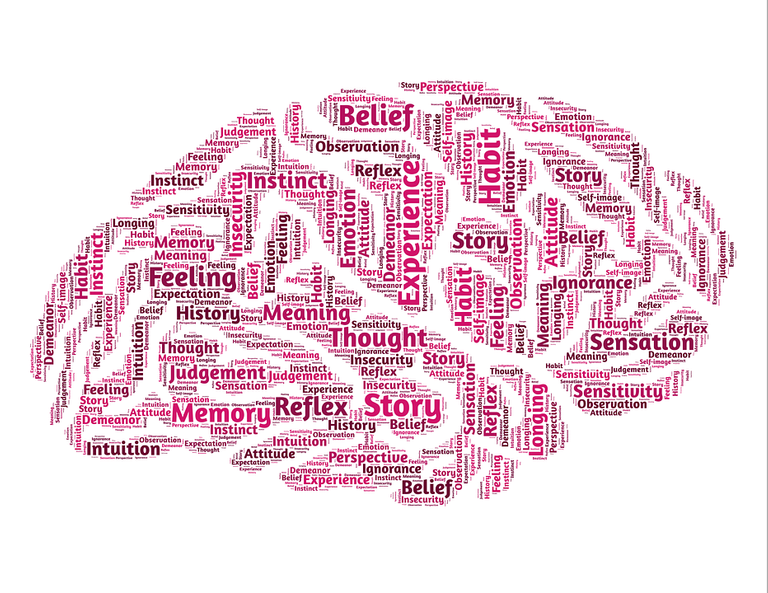What is the "Mandela Effect" ?:
It is when many people share a false memory.
This phenomenon occurs when many people remember with certainty something that never happened.
Nelson Mandela died on December 5, 2013 due to the effects of a respiratory infection. The death of the first president of color of South Africa and one of the main icons of the fight against apartheid occurred in his home after a prolonged period of agony at ninety-five years of age, being picked up by most mainstream media Communication.
However, there is a large number of people who were surprised by this fact, stating that they remember that the South African president died in prison and even declaring that he remembers scenes of his funeral. It is not an isolated case, but On other occasions a similar phenomenon has been reported in which some people remember things that in principle have not happened. Although there are numerous cases prior to the death of the South African leader, this phenomenon has been called the Mandela effect.
The Mandela effect was named after Fiona Broome, a researcher and passionate about the paranormal, who would receive with great surprise the news of the death of Nelson Mandela. The reason for the surprise is that Broome vividly remembered his death and its consequences, as well as his funeral, many years before the actual death. And not only her, but other people said to remember the same. Subsequently the debate would move to the Internet, where many people would share similar experiences.
Thus, Mandela effect refers to situations in which multiple people seem to remember, in a similar way or even identical to each other, phenomena that have not occurred or that do not coincide with real historical data. For these people their memory is real and true, as is the fact that in the present they are receiving information that contradicts this memory and it seems to be true
Attempts to explain the effect
The attempt to explain this phenomenon has provoked an ample debate, arising several attempts of explanation from diverse theories and perspectives.
Some people have relied on the theory of multiple universes to try to explain the Mandela effect, proposing that the reason for this can be found in the overlap of time lines of different alternative realities. In this way, what happened in this reality would be combined with that of another, appearing in the memory of the people an event that in our reality would not have happened yet or that under certain circumstances could have occurred.
In addition, some start from the quantum theory to consider that this effect is due to the possible displacement of our consciousness by these alternate universes. When facing the real fact of the current universe, confusion appears due to the dissociation between what is remembered and what is being reported, being for the subject both totally credible memories.
Within this stream, other people seem to consider that the Mandela effect is the product of the opening of portals between parallel universes due to collisions between particles that occur in CERN. Both perspectives are based only on speculation, and are rejected by the vast majority of researchers in psychology and neurosciences.
Another current of thought seems to indicate that the causes of the Mandela effect can be found in an attempt of control and mental manipulation on the part of governmental organisms, introducing false information with uncertain intentions.
Finally, another explanation offered by some people is based on the fact that we live in a programmed reality, in which modifications are made from time to time that alter our internal programming and leave traces of our previous state.

Psychological explanation of the Mandela effect
Although the multiple theories in this regard can be of great interest, this phenomenon is explicable from the psychology. Specifically, the origin of the Mandela effect can be found in a series of mental processes related to a malfunction or distortion of memory.
The presence of a Mandela effect is not indicative of the person lying about what he or she remembers. For this the memory is very real, remembering as such. However, the origen This effect can be found in the interference of other information or the creation of memory fragments with which the memory of the events is filled.
The reason for the generation of these memories can be found in the memory is largely constructive, remembering the main elements that were part of a scene and then reconstruct them mentally when we need to recover the memory. From this, it is easy that the introduction of new elements a posteriori or interference other thoughts, memories or beliefs can cause a false memory.
Some of the mental phenomena that can explain the Mandela effect are the following. Although they may be present as symptoms of various medical or mental problems, it is not uncommon for them to appear in the non-clinical population. In other words, it does not have to be indicative of a mental disorder.

SOURCE
1. The confabulation
One of the main elements that could explain the existence of the Mandela effect is the confabulation, the phenomenon by which human beings fill the different holes present in our memory with fabricated memories, unconsciously. This problem can be observed among others in cases of amnesia and dementia, but its appearance in people without clinical problems is not strange. This type of confabulations are also frequent in people who have suffered a severe trauma, such as sexual abuse in childhood, sometimes generating false mind memories to protect the individual from psychic pain and suffering caused.
Thus, based on a real memory, the individual elaborates and creates different spaces and fragments of memory. In most cases the generation of such fragments is not done with the intention of deceiving others, but the individual believes that his memory is such.
2. External induction of memories
The fact that multiple people coincide in the same memory may be due to the fact that it is not impossible to induce a false memory in other people. In fact, it has been shown that hypnotic or suggestion-based processes can induce them with some ease. Through the language and according to what type of questions are made regarding a specific situation, the person analyzed can modify their internal perception of the events recalled, as demonstrated by the psychologist Elizabeth Loftus.
That is why when hypnosis is used to recover memories, extreme precautions must be taken in order to avoid the generation of false memories. In fact, there is evidence that the use of hypnosis in cases of hysteria during the time of the Salpétriêre schools produced in some cases the false memory of having received abuse.
3. Cryptomnesia
Linked to the previous point we can find the phenomenon called cryptomnesia, which allows a memory to be experienced as something lived for the first time due to the presence of confusion about its origin. Consider as your own an idea or information that we have read, seen or heard, so that we can identify as a memory something that has come to us through others by confusing the memory of what we have thought or perceived with the actual memory of the events.
With this, a person can identify the belief of another as their own elaboration, so that the expansion of the same idea is possible without it being considered as coming from others.

SOURCE
4. Confirmation bias:
The mind usually tries to adapt your memories to the things you believe in, so the more you are interested in the Mandela effect, the more you will have these kinds of experiences.
5. Misinformation:
If there is a fact that you do not remember well or do not know in depth, but someone tells you about it, you can end up storing this information as part of your memories and later consider it true even if it is not.
6. False Attribution to memory:
The mind is never willing to accept as true, new facts that we previously took for granted, so even if an event has not happened, you may have heard the wrong version so many times, that when you hear the real you are surprised and deny it.
7. Cognitive Dissonance:
If a given information goes against your strongest beliefs then you are in an episode of denial of reality, trying to merge your memories with your beliefs.
8. False Memory:
Post-traumatic stress causes the brain to adapt memories to more acceptable events to improve the feeling of life.
Other examples of this effect
Memories of the death of Nelson Mandela are not the only ones in which the Mandela effect has appeared. Other historical phenomena have caused the same effect.
- Another case in which the Mandela effect has appeared can be found on July 5, 1989 was captured an image of a man stopping the row of tanks in the middle of the Tiananmen Square massacre in China. What happened was that the tanks could not pass, they stopped in front of a helpless man with bags in their hands. But the incredible thing is that today there are thousands of people who say they remember the event very different, they say that the tanks if they passed over that man taking his life and affirm it with such certainty that when they know what really happened they go into shock mental.

SOURCE - Mother Teresa of Calcutta, some were surprised when she was declared a saint, during the year 2016. Because according to them they remembered that this had happened in the year 90 seven years before her death. In addition there are those who say they remember that her name was not Teresa but Theresa.
- Something similar happened with Mohamed Ali, who continued to live long after a large number of people took it for granted that he was dead, he died on June 3, 2016
- In fact, even far from historical events of great impact or real historical figures have occurred similar phenomena. Similar cases can be found in movies, music or theater. A very common example that can be found in most people can be seen in the Star Wars movie: The Empire Strikes Back. In one of the most famous and replicated scenes, Darth Vader indicates to Luke Skywalker that it is his father with the well-known phrase "Luke, I am your father". However, in the original version of the film we can see that the real dialogue is "No, I am your father", having replaced one text with another in the collective imagination.

SOURCE - The series of bears The Berenstain Bears is remembered by some people as The Berentein Bears.
- The logo of the Volkswagen company is remembered by many people in a different way.

SOURCE - The functioning and composition of the digestive system.
- The size of the continents.
- The size of Italy.
- The location and size of Australia.
- The number of people who were in Kennedy's car when he was killed. Many say they remember that they were 4 people but in reality they were 6.

SOURCE - After the death of the dictator Fidel Castro of Cuba many people have exposed in forums that they have memories that Fidel Castro had already died years ago, some remember that he had died in the 90s, others that his death was announced 3 years ago or 4. Some even say that they remember seeing their image in the coffin with such accuracy that it terrifies them.
- Patrick Swayze, many remember that he recovered from cancer, when in fact died in 2009 product of that disease.
- The way Dr. Matin Luther King was murdered, some say he went with a pistol at a short distance, but it was actually with a long-range rifle.
- Katy Perry, many people claim that her name is not Katy but Kate.
- The blow of the 23F in Palace of courts, many people I think remember that was broadcast live that terrible event, but the reality is that it was broadcast on radio and passed on TV much later.
( )
)
SOURCE - Ricky Martin and the myth of jam jar: in antenna 3 a myth emerged of a supposed scene where Ricky Martin surprised a fan but when coming out of the closet where he was found without clothes and with a jar of jam and his pet. Well, that scene never existed and the presenter had to leave to deny the myths about the video being erased.

SOURCE - The film by J.J. Abrams Super 8, the protagonists never kissed, although people say they remember that the kiss between them was the most tender part of the movie.

SOURCE - Tom Cruise did not wear glasses in the famous Rodriguez dance scene at Risky Business, but all the imitations include it with glasses.
- The painting of Henry VIII by Hans Holbein people say they remember that he was wearing a turkey leg, but this idea is false, he only wore a glove.
- If I ask you to remember the original C3PO of the war of the galaxies surely imagine a metallic robot completely gold, right ?, but the reality is that it was not like this, this robot had a silver colored leg. Star Wars silver leg

SOURCE - The typical monopoly emblem we all remember, a tycoon running with a bag of money and a top hat, has never worn a monocle lens, but you remember that, right?

SOURCE - Irrefutable proof of the cardal effect in Carpool James Corden's Karaoke
This is the most recent test that has been recorded on video of the Mandela effect, you'd better be sitting down because you can be really impressed with what you're going to see. We all remember the famous song "We are de champions" by Queen, do you remember it ?, well if you remember the end of the song, you will remember that it ends in "of the world" or as it would sound in music "because we are the championsssss ... of the woooorrrlldd ", now if you remember it ?, well but if I told you that in the original song there is no" of the world "ending, that's right, the song ends in" champions "and there is a silence and silence We are going to try it with the original video and with an amazing video where the famous Julia Roberts, George Clooney and Gwen Stefani when they attended the James Corden Carpool Karaoke program and sang the song, in the end they are shocked when they see that phrase so remembered mysteriously disappeared from the original audio.
Original song
VIDEO
Carpool Karaoke
VIDEO
- A few months ago a man created a youtube channel called FunkyFatHead in which he published a shocking video in which he shows a book by Berenstain Bears, second later in the video explaining that strange things happen in his room, this man walks towards the entrance of this room and shows how when you enter it in the book the letter "a" of the word Berenstain is changed to "e" and when you return out of this room the letter "a" returns. This in front of the lens of your camera becomes the clearest proof that those who remember this word with the letter "e" were not so wrong and the effect is as real as our own world. Judge the video by yourself
VIDEO - There are many people convinced that the Chakotay character in Star Trek: Voyager is killed in an episode after which, a few chapters later, he returns alive. But that plot is totally invented.
- In one of the old James Bond movies, Moonraker, there is a female character named Dolly who wore glasses braids and dental apparatus. Any image of that movie will show that the actress Blanch Ravalec never brought an apparatus for those scenes.
The year influences The Mandela Effect
According to recent research has determined that people who have this feeling of memories that have never occurred are usually those who were born since 1955 and until 1980. There have been very few cases where people born from the year In 1981, you have these memory distortions, because, as is logical, your memories of past events never existed differently from what you have known in history books.
Tell me what do you think about this phenomenon? Has something similar happened to you? I'm sure you will not read Nelson Mandela's biography in the same way, since you'll be very aware of whether you're in the correct universe. The idea of this is that you can open your mind and understand that the mysteries and enigmas of the universe are so gigantic that sometimes they are incomprehensible to us.
